Acherontia atropos (death's-head hawkmoth)
Watch this video to see the death's-head hawkmoth and hear its squeak, while Museum scientist Ian Kitching explains the moth's fearsome reputation.
The death’s-head hawkmoth, Acherontia atropos, is found throughout tropical Africa and adjacent areas. It also migrates into temperate regions and is regularly found in the UK.
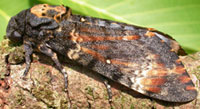
Death's-head hawkmoth
It is one of the UK’s largest moths and is readily identified by its large size, the skull-like marking on the thorax and its yellow-striped abdomen.
The females are very similar to the males but have thinner antennae, slightly broader and more rounded wings, and fatter bodies.
Unlike most moths that collect nectar from flowers, the death’s-head hawkmoth is very well adapted to raiding honeybee colonies and sucking honey directly from the comb.
Species detail
-

Mythology
The death’s-head hawkmoth has one of the direst reputations of any insect. Delve deep into its mythical underworld.
-

Taxonomy
There are 3 species in the genus Acherontia. Discover how they differ.
-

Life cycle
The life cycle of Acherontia atropos has 4 stages: egg, larva, pupa and adult. The larvae gradually change colour as they develop, and eat voraciously, reaching 13 centimetres long before they pupate. Find out more about the life cycle of this giant moth.
-

Behaviour
Most moths and butterflies drink nectar from flowers using a long, tubular ‘tongue’ (proboscis), but the death’s-head hawkmoth lets honeybees do the hard work. The moths raid beehives to steal honey. But how do they get away with it?
-

References
Get reference material for Acherontia atropos.
Distribution map
A world map showing the distribution of Acherontia atropos
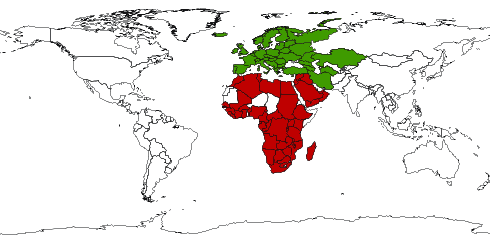
The resident range is shown in red. The non-resident or migratory range is shown in green.
You can find a map of recorded occurences of Acherontia atropos on the Global Biodiversity Information Facility website.
Acherontia atropos is an Afrotropical species. It is also resident in the southern Mediterranean basin and eastwards, through the Middle East and Arabian Peninsula, to the Caucasus and north-eastern Iran. It also occurs on many islands including the Azores, Madeira, Canary Islands, Seychelles, Comoros, Madagascar, Mauritius and La Réunion.
The moth is a great wanderer and has been found throughout Europe, as far north as Iceland and Scandinavia. However, at these extreme latitudes, it does not survive once the weather turns cold in winter.
Images
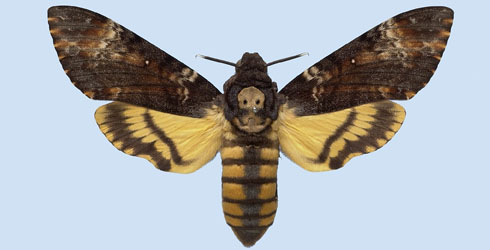
Female Acherontia atropos.
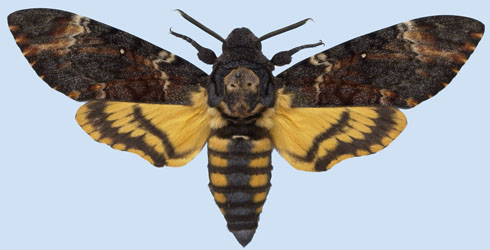
Male Acherontia atropos.
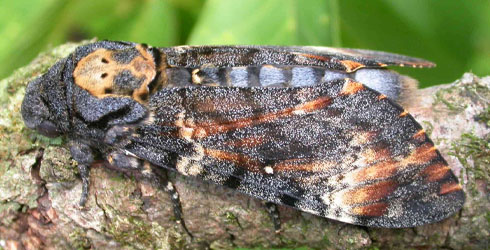
Acherontia atropos.

Death's-head hawkmoth (Acherontia atropos).

Acherontia atropos pupa.
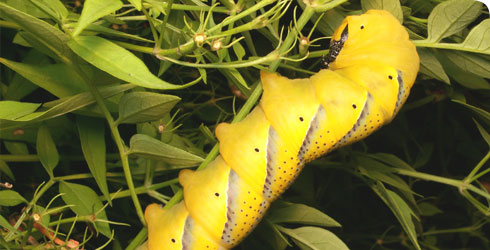
Acherontia atropos caterpillar.
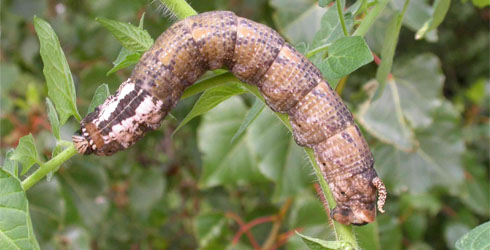
Acherontia atropos caterpillar.
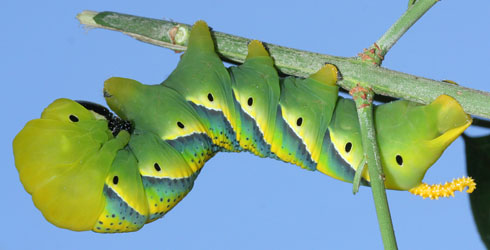
Acherontia atropos caterpillar.
Author
A word from the author
"The death’s-head hawkmoths have a unique relationship with a completely different group of insects - the honeybees, who unwittingly provide them with their food supply. I am fascinated to discover how this 'kleptoparasitic' lifestyle evolved."
